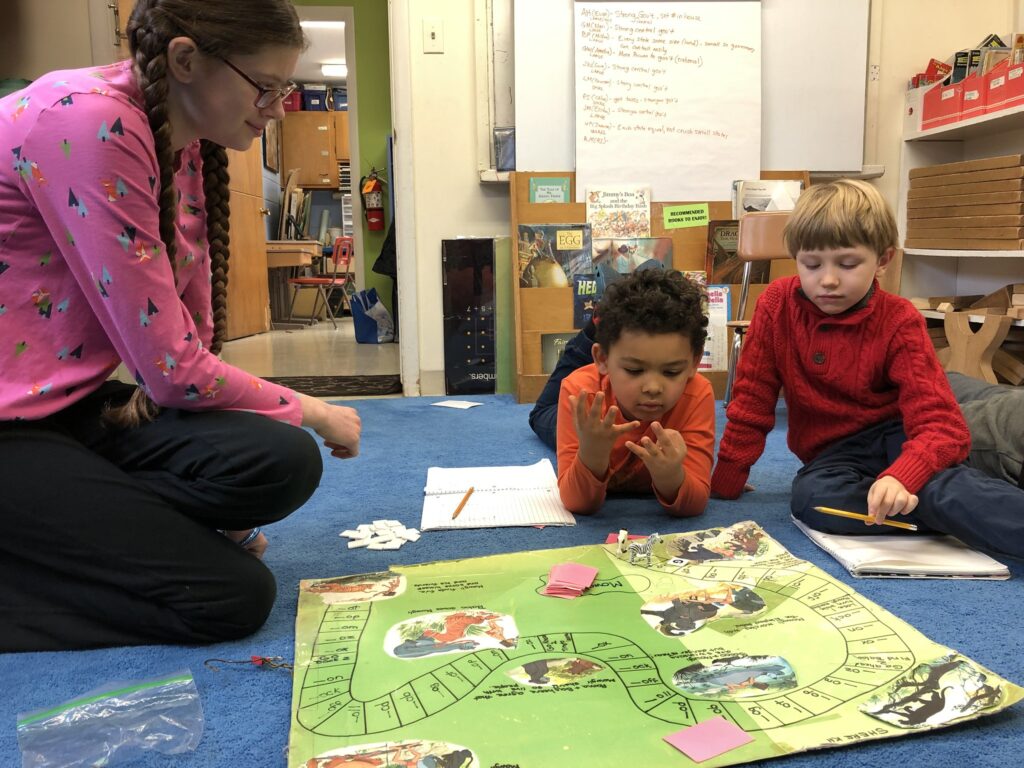 Why do we play games? What do they accomplish for teaching and learning?
Why do we play games? What do they accomplish for teaching and learning?
We have games for math, language arts, social studies, science and strategy. We have games for inside and outside. We have cooperative and competitive games. We have games we buy and we have many more games teachers and children have made. As children make games, they isolate a skill to teach, which reinforces their own learning.
Games have both academic and social goals. Over generations we have created games sequenced to our curriculum. This allows games to be an integrated part of our math or language arts programs and for children to build skills in a structured way. We use a variety of games: card games, board games, active learning games. Math games can begin with counting and comparing numbers on up through geometry and algebra. Language Arts games can begin with letter names and sounds, vowel sounds, vowel teams through word making games, and reading comprehension activities.
For teachers, games are an excellent way to analyze and diagnose a student’s skills. How do they approach two die? Do they count each dot, one at a time, do they add on the second, do they just know automatically? Do they have a sense that the bigger the denominator, the smaller the piece? How do they strategize figuring out an unknown? Using games also allows children to develop social skills. Games have rules. Decisions have to be made about who goes first, is it cooperative or competitive? Children have to learn how to both win or lose. Neither of these are easy skills. We have group discussions to listen to our classmates’ thoughts about how to win or lose gracefully.
Games also encourage flexible thinking. When solving math problems in a game with or without paper, children often use multiple means, trying first one way and then another to make the outcome work within the game. This mental agility helps children later when they are working with more traditional math materials. Depending on the game and the children, they will often find ways to help and support each other as they discuss the goal of the game or turn.